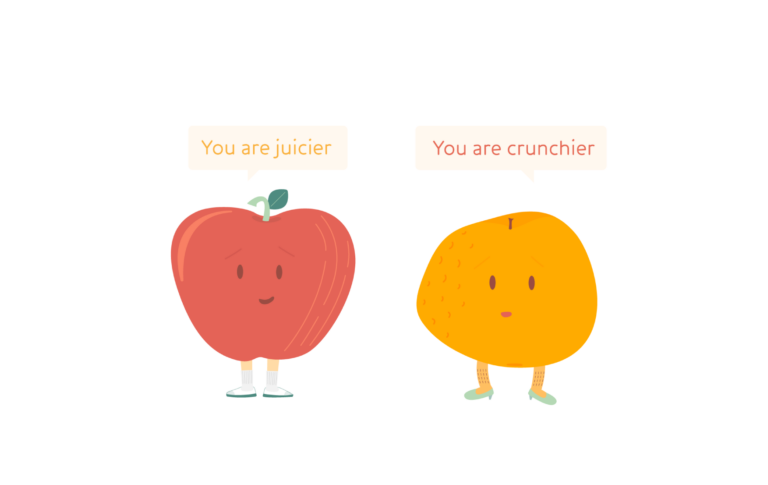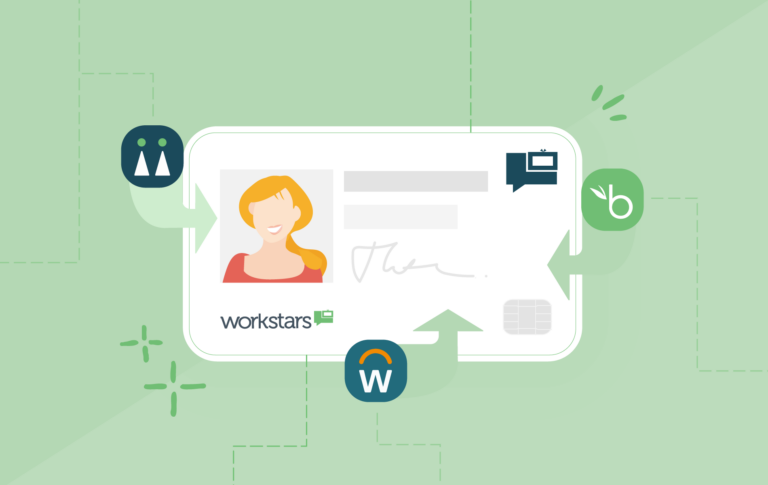The 20 benefits of peer-to-peer recognition
The advent of online tools and software in the world of employee recognition has helped many businesses create thriving cultures where staff feel appreciated for their efforts.
However, many recognition programs still focus on tenure and service awards, and whilst 81% of organizations report to having an employee recognition program in place, less than half say it has a peer-to-peer component.
So, what is peer-to-peer recognition and how is it beneficial as a recognition model?
What is peer-to-peer recognition?
Peer-to-peer is a recognition model that allows employees to show appreciation and gratitude for each other’s work in a public setting. Unlike some approaches to recognition, peer-to-peer has very little hierarchical oversight and empowers workers to freely recognise good things they see as and when they happen, without the need for managerial sign-off. This can and does extend into employees also giving reward in some organizations.
There is plenty of research indicating a peer-to-peer approach is better for your bottom line. SHRM found that a peer-to-peer recognition model is nearly 36% more likely to have a positive impact on financial results than manager-only recognition.
However, the benefits of peer recognition go beyond financial results and the bottom line. Embracing a modern attitude to employee performance and behavior can offer incredible benefits across a range of workplace factors, from wellbeing and motivation to collaboration and stress management.
So, here are 20 research-backed benefits of peer-to-peer recognition.
Increased employee satisfaction
Employees that feel that their colleagues appreciate the work are far more satisfied with their jobs.
No surprise there, but a great starting place for our list. Increased levels of recognition can boost employee satisfaction. In fact, one survey found that peer-to-peer recognition made 90% of staff more satisfied with their work.
Creates a cycle of recognition-giving
When one employee recognizes their colleague for a job well done or a great contribution to a team task, that staff member is then far more likely to go and recognise someone else, and the cycle of recognition continues.
This is one of the many reasons why participation in peer-to-peer recognition models is typically extremely high. In fact, research from The Incentive Research Foundation found that amongst millennials in particular, peer appreciation and being recognized publicly was the preferred choice, whilst across all age groups, receiving recognition in private was the least preferred way to be recognised.
Improves employee relationships
Increasing positivity and giving thanks are both great ways of improving employee relationships and building rapport.
In fact, feeling that you have a best friend at work is listed as a key measure of engagement on Gallup’s 12 items that measure employee engagement.
Improved confidence in knowledge and abilities
Being recognised is a big tick when it comes to acknowledging what you know and what you do are correct. When employees feel that their efforts are appreciated, they also feel more positive about their job and organization as a whole – and that increased positivity has a number of benefits.
In fact, positivity has been shown to create feelings of greater self-efficacy and confidence. Within the workplace, that confidence leads to greater levels of work satisfaction and reinforces staff confidence in their own knowledge and abilities.
Foster collaboration
Encouraging employees to recognize each other creates a positive atmosphere where teamwork and peer support can thrive.
Employees with better rapport amongst themselves are far more likely to be open to participating in group activities and tasks. Increased resolution in their own knowledge and abilities will create more confidence to voice opinion and ideas in collaborative settings as well.
And companies that promote collaborative working have been found to be five times as likely to be high performing as those which don’t.
Promotes values and aligns behavior with them
Employee recognition programs don’t just show appreciation for great work and outcomes, they also allow for recognition to be given for the right behaviours.
When recognition is linked to organizational values, actions that are in-line with those values become enforced. As a result, employees are more likely to repeat them time and time again.
Affinity with organizational values also increases, which is key as research has found 86% of millennials would take a pay cut to work at a company which has similar values to their own.
Greater trust between workforce and management
Employees recognizing and showing appreciation for each other’s efforts is a quickfire way to build trust amongst colleagues.
One study from the Delft University of Technology looking to understand the nature and functioning of trust in work teams found that increased trust can benefit not only ultimate outcomes and performance but also organizational attitudes including satisfaction and a commitment.
Reduced employee turnover
Staff who feel appreciated are far less likely to be looking for new work than those who don’t feel that their contributions are recognized at all.
Recognition-rich cultures have been shown to have 31% lower voluntary turnover, whilst just 34% of staff would be happy to remain at a job if their efforts weren’t appreciated.
Less reliance on management
Peer recognition is in the most part self-sufficient. Management is no longer required to be the sole driving force behind creating collaboration, appreciation and engagement.
However, managers still have an important role to play. In fact, one study found that 50% of employees reported that being thanked by their managers not only improved their relationship but also built trust with their higher-ups.
But through peer-to-peer recognition software, showing appreciation to staff is easier than ever for team leaders and even the C-suite. They have the benefit of initiating recognition like every employee, or piggybacking on other recognition activity with words or rewards.
Increases transparency
The peer-to-peer recognition model is transparent by nature. Everyone from within an organization can see who has been recognised, what they said, and of course and critically, what some employees and managers have not said. This even goes as far as including any reward denominations attached to recognitions given if the organization wants complete transparency settings.
This level of transparency can have a powerful impact on a workforce as well as the overriding organizational culture. In fact, leaders who practice transparency and positivity are seen as more trustworthy and more effective by their teams.
Reduces perception of hierarchy
Peer-to-peer recognition helps remove the sense of hierarchy from an organization by empowering workers to freely recognise each other’s achievements.
And flatter hierarchical structures are often desired by a workforce. In fact, 66% of participants in one study said they were happy that their organization was moving to a flatter hierarchy as it gave them the opportunity to get involved with decision making conversations.
Increased profitability
For HR teams that need to include a financial element to a business’s case for new software, peer-to-peer recognition has it all.
It has been shown that businesses that practice recognition are more successful and can generate bigger profits. In fact, one study by Gallup has found that increasing recognition can increase profits by between 14% and 29%.
An improved sense of belonging
One of the big benefits of being recognised by peers is it creates a sense of belonging at an organization.
A sense of belonging is the single metric that consistently ties together workplace commitment, pride and motivation, and goes beyond a mere good vibe around the office.
This study found that being recognized for accomplishments was the top factor in helping employees feel that they belong at the company.
And a better organizational fit too
A further study by IBM found that employees recognised in the last month were 19% more likely to agree that they fit in at their organizations. That sense of organizational fit can benefit a range of workplace factors, including performance, job satisfaction and strategic alignment.
Boosts motivation and productivity
Feeling recognized can deliver a powerful shot of motivation. Think back to the last time someone appreciated a piece of work you’d just completed. Chances are, you felt highly motivated and had a very productive rest of the day as a result.
One survey even found that 77% of employees say they would work harder if they felt better recognized.
Improved efficiency
Peer-to-peer recognition can also increase workforce efficiency.
The feel-good factor that comes from being recognized by our peers can encourage employees to make decisions more quickly and efficiently too.
Fewer sick days
There are a range of factors that can influence the number of working hours lost to illness. With almost 90% of HR professionals reporting presenteeism in their organizations, burnout and stress-related absences have been on the rise.
And whilst, peer recognition isn’t the sole antidote to staff absences, it can help promote a healthier working culture. And aside from recognition giving assurance that employees are doing well for the company, the increased personal happiness from feeling appreciated has also been shown to reduce the number of sick days taken by 64% compared to unhappy employees, as well as having 23% fewer symptoms of fatigue.
Positive emotions have also been shown to be associated with greater levels of resilience and assist in fending off long-term burnout.
Improved customer happiness
Employees that feel appreciated are more likely to provide better care and support for customers.
In fact, one study found that 41% of companies who had introduced a peer-to-peer recognition scheme saw customer satisfaction increase as a result.
Improved long-term employee engagement
Peer-to-peer recognition, or indeed any recognition model, is not the holy grail of engagement, but instead one of the key components to building an engaged workforce. Research from Aon found rewards and recognition to be the strongest driver of engagement – the aim for organizations around the world.
Find out how to create a culture of appreciation and embed peer-to-peer recognition in your organization here.


 How Machias Savings Bank improved employee satisfaction and increased commitment to company values
How Machias Savings Bank improved employee satisfaction and increased commitment to company values
 Great managers vs natural leaders: What’s the difference (and does it matter?)
Great managers vs natural leaders: What’s the difference (and does it matter?)
 Workstars now integrates seamlessly with the HRIS you use every day
Workstars now integrates seamlessly with the HRIS you use every day